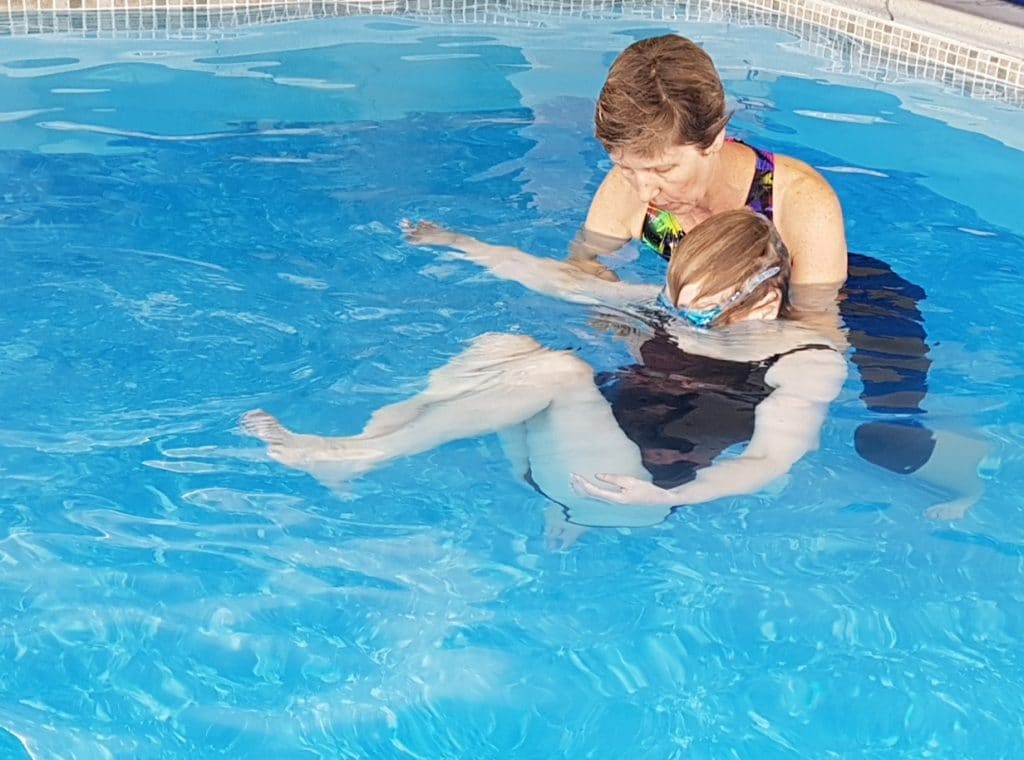“ The process of learning to swim properly requires brain work and redirection of energy, from both teacher and pupil. As a teacher, you can only do so much of it and as a pupil, you need the right setting.”
Learning to swim is all about trust. You’ve got to trust the water to support you, which really means trusting yourself to let the water support you. But first you have to trust the person helping you. If the pupil – teacher relationship is the bridge, to build it we need a quiet setting, where we can can hear ourselves think.
Group lessons can be great for more confident swimmers. There’s potential for an atmosphere of fun and mutual support, with people learning from each other. Groups make sense for a teacher who wants to earn decent money and for pupils, tuition should cost less per hour.
But while appearing to offer value for money, group lessons are often unsuccessful for learners because no two non-swimmers are the same. If you’re the most anxious person in a group, you’re unlikely to have a positive experience because you won’t get the time, attention and direction you need. If you’re fearful, you need to quieten down. Being in a group may not be conducive to you finding the calmness in yourself that you need to approach the water with.
“Just a quick note of thanks to you both for your help , understanding and endless patience this week. I really can’t express how anxious I was but I guess you could see it! The thought of putting my head under water etc freaked me out but with your help I could and did and I’m forever grateful. I came with no expectations but I’m proud that I coped with it and it will be the springboard to greater things.” (John from Merseyside, here last week).
On the subject of decent money, I remember buying a new motorbike from a local dealer and hoping for a generous trade-in price for the one I’d bought there a year before. More than once the shop owner told me, ‘We’re in business to make money’. I accepted the deal he was offering and screamed away on my shiny new Suzuki. But I never went back. The shop isn’t there any more.
If you teach swimming primarily to make money, you’re not going to last long as a teacher. ‘Less is more’. Most teachers do too many hours of teaching and too much with pupils.
The process of learning to swim properly requires brain work and redirection of energy, from both teacher and pupil. As a teacher, you can only do so much of it and as a pupil, you need the right setting.
In 20 years our business model has stayed pretty much the same. We offer one to one lessons (or shared lessons for couples and friends), at what we feel is a fair price for our time and experience, and we limit our teaching hours.
One of my best educational experiences was an advanced motorcycle riding course with an excellent instructor, now retired, called Terry Dodd. He was king of the road but calm and kind. Just Terry and me for 3 days on the roads of North Wales was a transforming experience, worth every penny of the £500 fee. Being in a group of riders wouldn’t have worked for me. I’d have felt under pressure not to be the worst.
Other positive learning experiences of mine include private lessons with a few Alexander Technique teachers, in their own homes. Each of them in their own way patiently encouraged me to find for myself a new direction and a calmer state. A quiet environment with few distractions is conducive to that kind of work.
People learning to swim need a calm, quiet aquatic space. If this doesn’t sound too pretentious, teachers and pupils need to absorb the calmness and quietness of the still pool water, transmit these qualities to each other and then back to the water again. This is what seems to happen, when 1:1 work in the water works.


